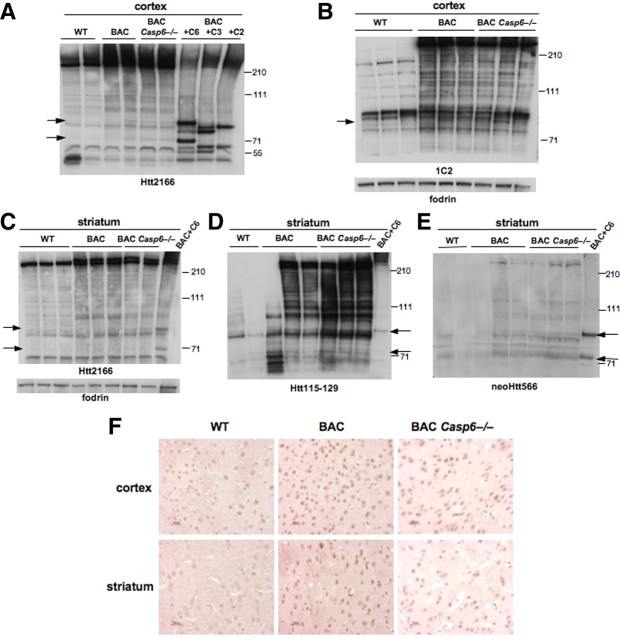Figure 6.
Fragments similar in size to Htt586 are present in BACHD Casp6−/− cortex and striatum. A, Western blot of cortical lysates from 13-month-old animals with caspase-6-, caspase-3-, and caspase-2-treated lysates probed with Htt2166 antibody. The arrows indicate Htt586 products. B, Western blot of 13-month-old cortical lysates probed with 1C2 antibody. Fodrin shows equal loading. The arrow indicates size of expanded Htt586. C, Western blot of 15-month-old striatal lysates probed with Htt2166 antibody. Fodrin shows equal loading. The arrows indicate size of Htt586 products. D, N-terminal Htt antibody (Htt115–129) detects Htt586 fragments in 13-month-old solubilized striatal pellet Western blot. The arrows indicate size of Htt586 products. E, A neoHtt586 antibody detects Htt586 fragments in 13-month-old solubilized striatal pellets. The arrows indicate size of Htt586 products. F, Immunohistochemistry with a neoHtt586 antibody in 15-month-old cortex and striatum shows an increase in staining in BACHD and a subsequent decrease in staining in BACHD Casp6−/− most likely reflecting lower Htt levels overall.

